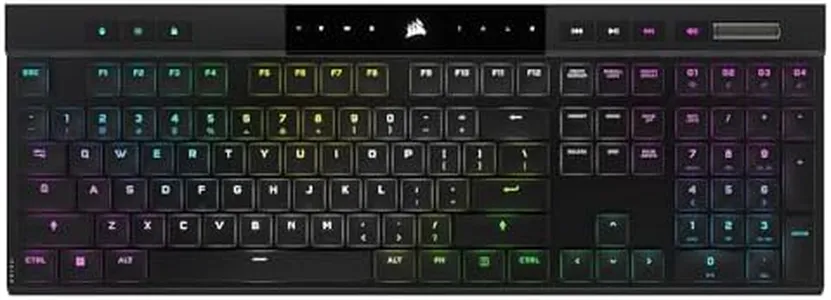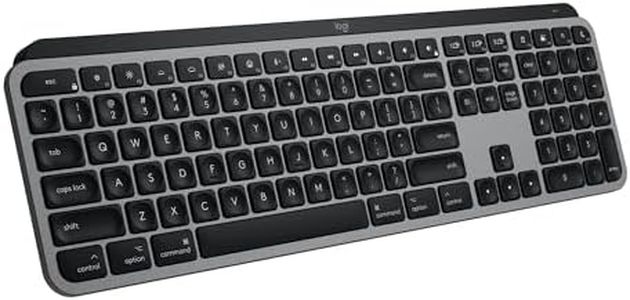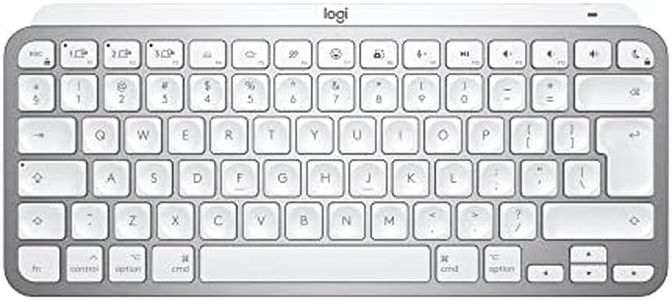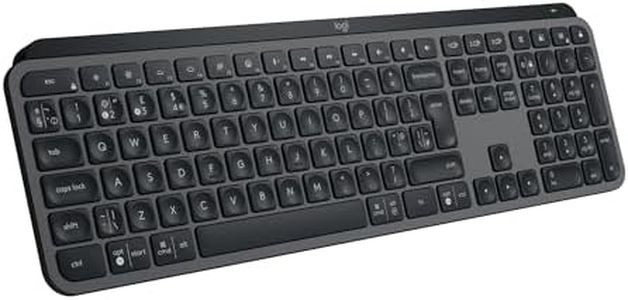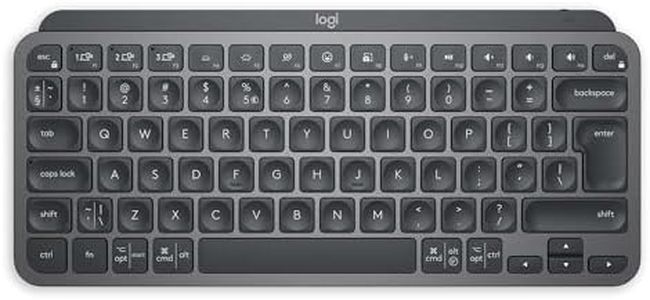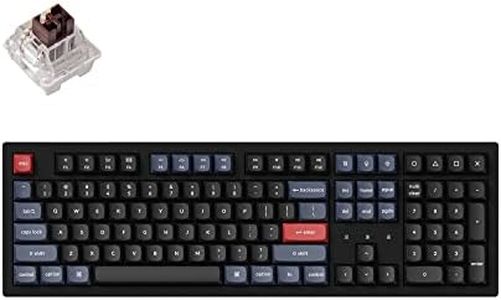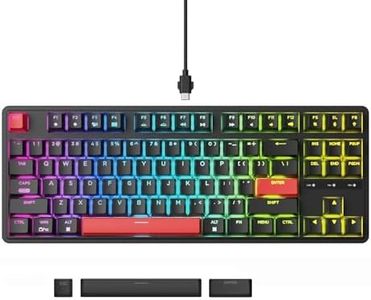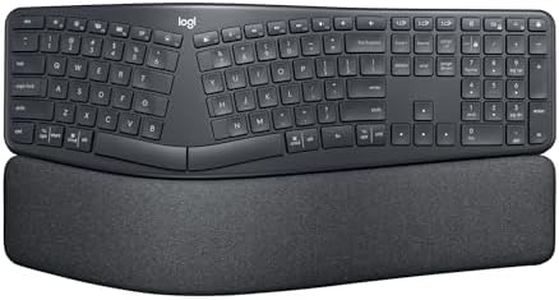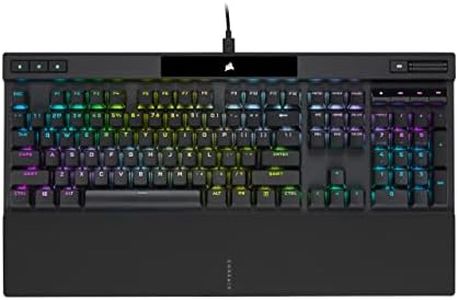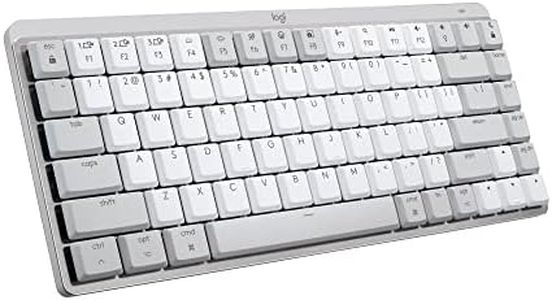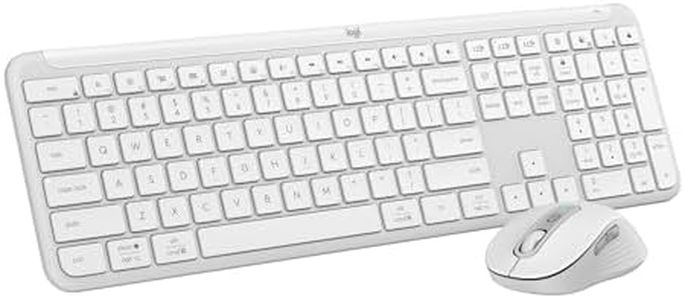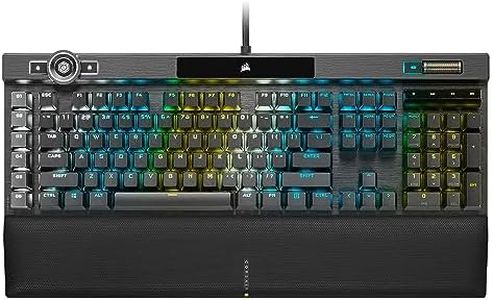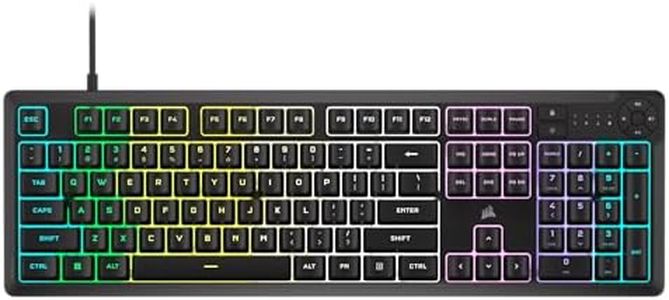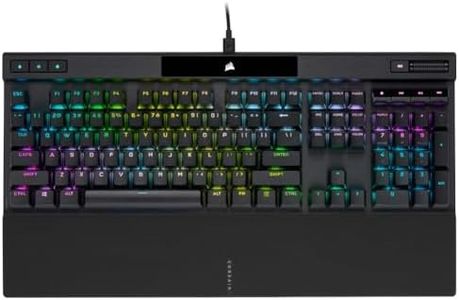We Use CookiesWe use cookies to enhance the security, performance,
functionality and for analytical and promotional activities. By continuing to browse this site you
are agreeing to our privacy policy
10 Best Keyboards For Mac
From leading brands and best sellers available on the web.Buying Guide for the Best Keyboards For Mac
Choosing the right keyboard for your Mac can make a big difference in your daily comfort and productivity. While most keyboards work with Macs, paying attention to key features specific to the Mac ecosystem ensures better compatibility and a smoother experience. It’s helpful to think about how, where, and how often you'll use your keyboard—at a desk, on the go, for long typing sessions, or just casual use. Start by understanding the essential specifications so you can match them to your personal needs.Mac CompatibilityMac compatibility refers to whether the keyboard is designed to work smoothly with macOS, including support for Mac-specific keys like Command, Option, and Control. Some keyboards are designed for Windows and may have labels or layouts that don’t match up with Mac shortcuts. If you need access to all Mac functions and want shortcut keys to be clearly labeled, check that the keyboard is either Mac-specific or at least supports macOS. If you switch between Windows and Mac, you might consider a keyboard with universal compatibility, but if you are dedicated to Mac, always prioritize Mac-ready options.
Connection TypeConnection type determines how the keyboard communicates with your Mac, either via a USB cable, Bluetooth, or a proprietary wireless dongle. Wired keyboards offer reliable connection and no battery worries but aren't as portable. Bluetooth models are cable-free and more versatile for mobile setups, but require keeping batteries charged. Proprietary wireless (using a USB dongle) can be an option, though Macs without USB-A ports may need an adapter. If you prefer a tidy desk and mobility, Bluetooth suits you best. If you want zero lag and stability, go wired.
Key Switch TypeThe switch type means how each key feels and responds when you press it. Keyboards generally come with membrane (softer, quieter, low profile) or mechanical (tactile, clicky, more durable) switches, and some use scissor switches, common in laptop keyboards. If you do lots of typing and like a responsive, clicky feel, mechanical might suit you, but if you prefer a quieter and softer press, or want something closer to the MacBook’s built-in keyboard, look for membrane or scissor switches. Your typing style and comfort preference should guide you.
Layout and SizeKeyboard layout and size refers to the arrangement of keys and overall dimensions. Full-size keyboards include a number pad, function row, and navigation keys, offering full functionality but taking up more space. Compact or tenkeyless (TKL) keyboards omit the number pad, making them smaller and easier to fit on a crowded desk or carry in a bag. There are also ultra-compact (like 60% or 65%) layouts which further trim features for portability. If you do a lot of data entry or gaming, consider full-size; if space and mobility matter, try compact designs.
BacklightingBacklighting means the keys have built-in lighting so you can see them in low-light conditions. Some keyboards offer single-color lighting (usually white), while others provide customizable RGB lighting. If you often work late or in dim rooms, backlighting is a helpful feature. For general office use, single-color is more than enough, but if aesthetics or customization matter to you, RGB options let you personalize colors.
Battery Life (for wireless keyboards)Battery life refers to how long a wireless keyboard can operate before needing a recharge or new batteries. Some keyboards have built-in rechargeable batteries, while others use disposable batteries. If you don’t want to worry about frequent charging, look for models advertised with months of battery life; otherwise, consider how easy it is to swap or recharge batteries. If you’re on the move a lot, longer battery life reduces interruptions.
Build Quality and ErgonomicsThis covers both how sturdy the keyboard feels and how comfortable it is to use. Look for solid materials like aluminum or high-quality plastic, and check if the keyboard has features like wrist rests or adjustable feet for better typing angles. If you type for long periods, a keyboard with good ergonomics and solid construction will help keep your hands comfortable and the keyboard lasting longer.
